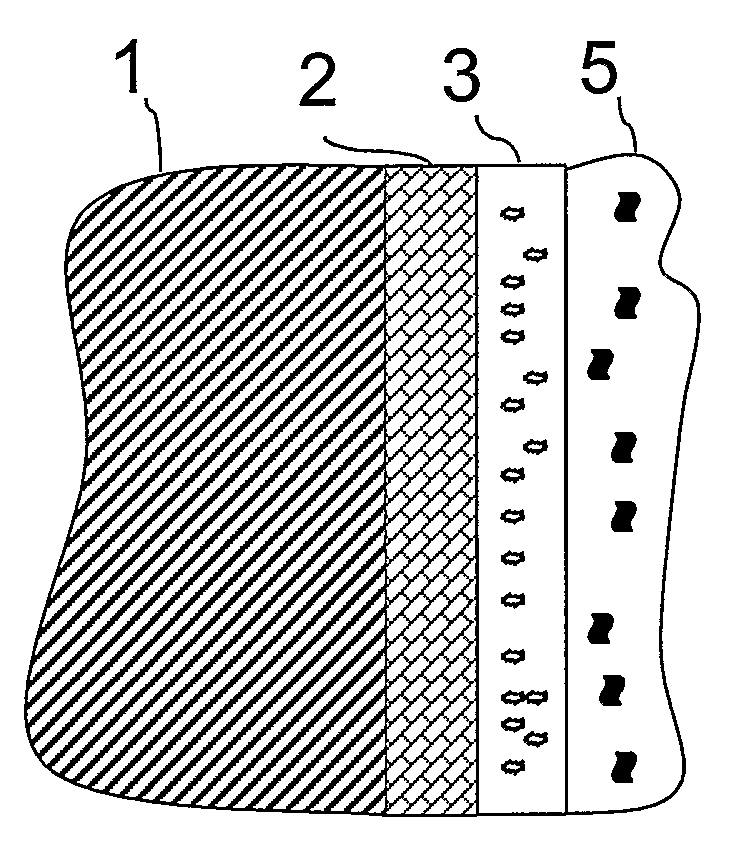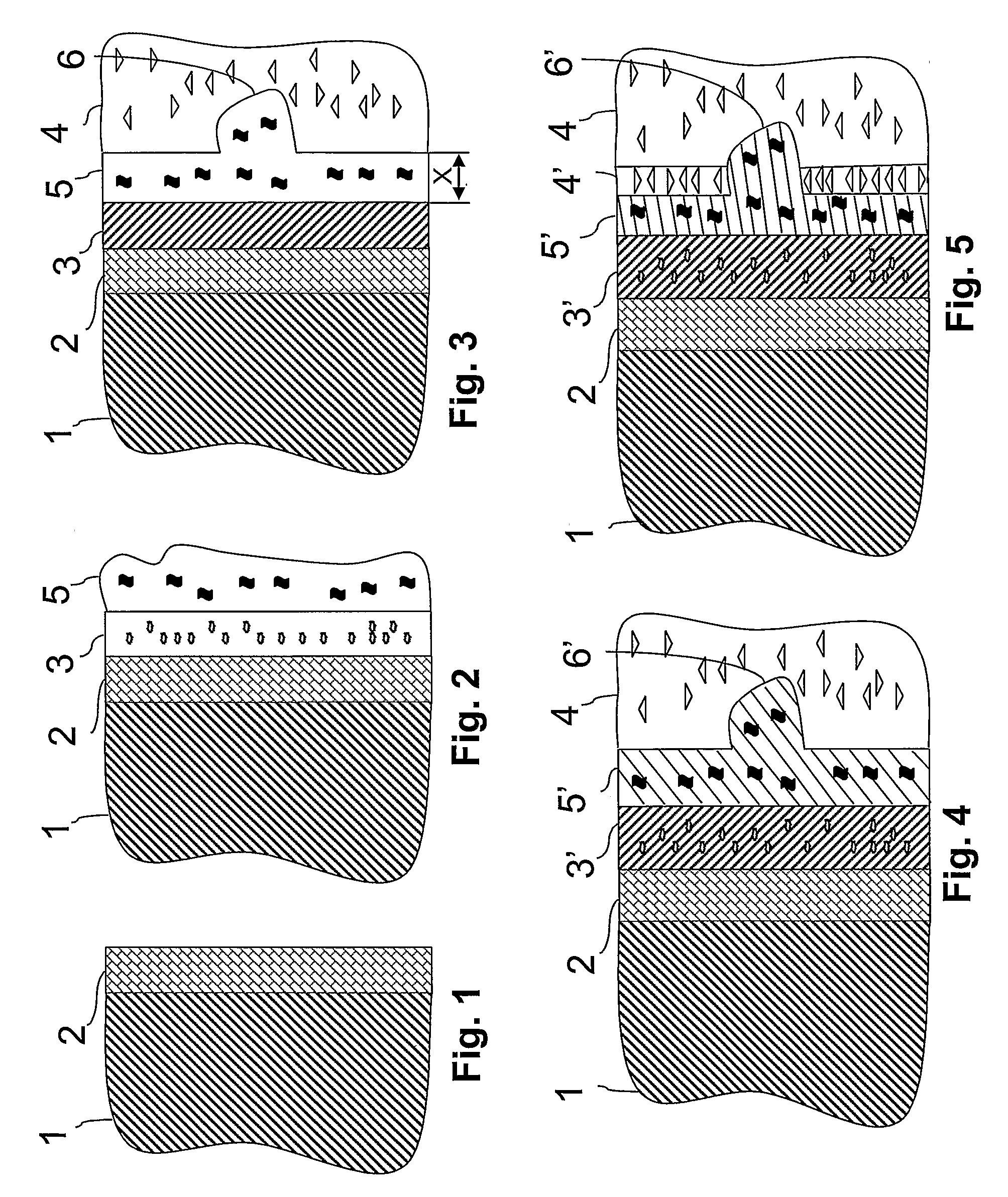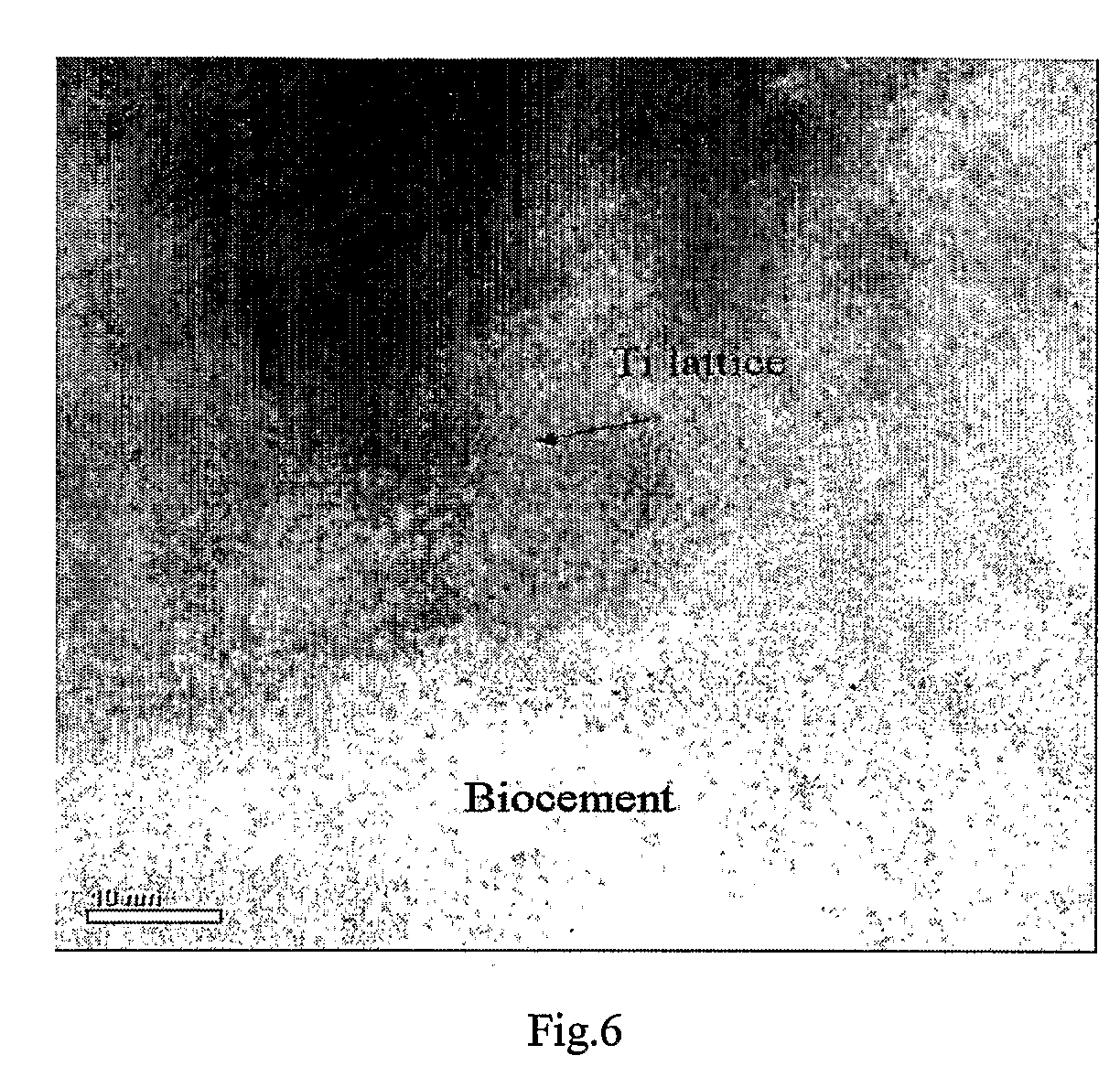Implant and method of producing the same, and a system for implantation
a technology of implant and method, applied in the field of coating implants, can solve the problems of increasing the risk of implant loosening, and achieve the effect of promoting bone regrowth and high strength
- Summary
- Abstract
- Description
- Claims
- Application Information
AI Technical Summary
Benefits of technology
Problems solved by technology
Method used
Image
Examples
example 1
[0055] Titanium dental screw implants with a diameter of 3.70 mm and having a thread length of 5 mm were implanted in the tibia condyl of adult rabbits. These screws, mildly sand-blasted, were used as reference screws (Series D below). Holes were drilled following a dental implantation procedure involving two drilling steps using tools with a greater diameter than that of the implant, followed by creation of threaded holes into which all implants were screwed to the same depth.
[0056] Other implant screws, of the same type as the references screws (mildly sand-blasted), were plasma-sprayed, with a calcium aluminate, CaO.Al2O3, (Series A) and calcium silicate, CaO.SiO2 (Series B). Both series were sprayed such that they generated a surface coating having a thickness of about 30 microns on the threaded section. A third series C, were RF-sputtered with a thin CA-coating (approximately 0.2 μm and covered with a thin water-based calcium aluminate paste (having the same composition as use...
example 2
[0059] A transmission electron microscopy (TEM) study of the hydrate grain size was performed on plasma-sprayed coatings of hydrated CaOAl2O3.
[0060] Metallic implants were put in the femur of rabbits for 24 h. The rabbits were then terminated and the implant fixated and embedded. To obtain TEM samples of the hydrated coatings, focused ion beam microscopy (FIB) was used. Cross-sections of the metal-coating interface were produced via cutting with a diamond saw and polished to 0,25 micron using a cloth and diamond paste. TEM-samples of five by five micron were produced from the cross-sections using the FIB. The samples were then imaged in annular dark field STEM mode in a 200 keV FEG TEM (Jeol).
[0061] The hydrates were plate- or needle-shaped and had a grain size of below 100 nm, see FIG. 7.
example 3
[0062] A chemically active surface was produced on an inert alumina implant by pressing a layer of CaOAl2O3 onto the alumina surface, followed by a heat treatment at 1100° C. for 6 h. Examination of the surface composition after heat treatment with X-ray diffraction, showed that only crystalline CaOAl2O3 was present on the surface. The adhesion between the CaOAl2O3 layer and the implant was very strong as tested with scratch testing, and no delamination of the coating occurred.
PUM
| Property | Measurement | Unit |
|---|---|---|
| Length | aaaaa | aaaaa |
| Length | aaaaa | aaaaa |
| Fraction | aaaaa | aaaaa |
Abstract
Description
Claims
Application Information
 Login to View More
Login to View More - R&D
- Intellectual Property
- Life Sciences
- Materials
- Tech Scout
- Unparalleled Data Quality
- Higher Quality Content
- 60% Fewer Hallucinations
Browse by: Latest US Patents, China's latest patents, Technical Efficacy Thesaurus, Application Domain, Technology Topic, Popular Technical Reports.
© 2025 PatSnap. All rights reserved.Legal|Privacy policy|Modern Slavery Act Transparency Statement|Sitemap|About US| Contact US: help@patsnap.com



